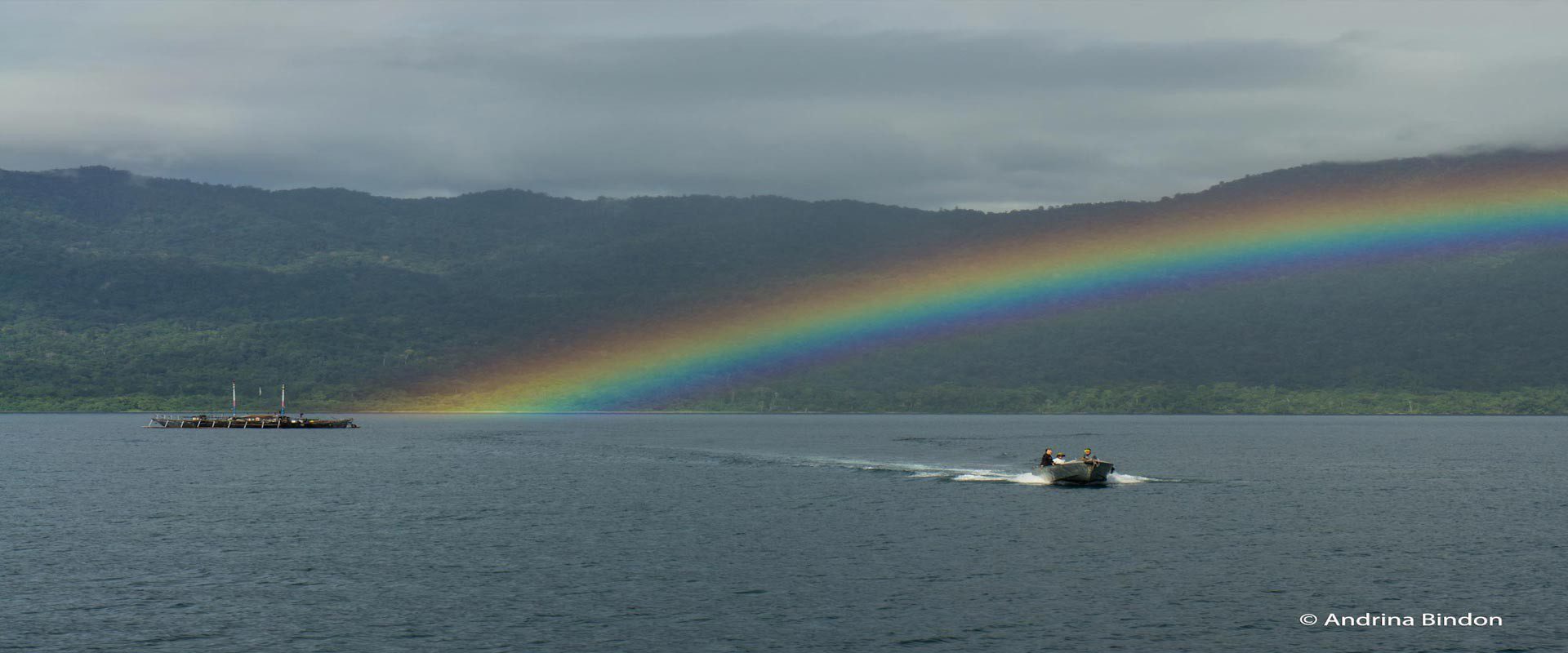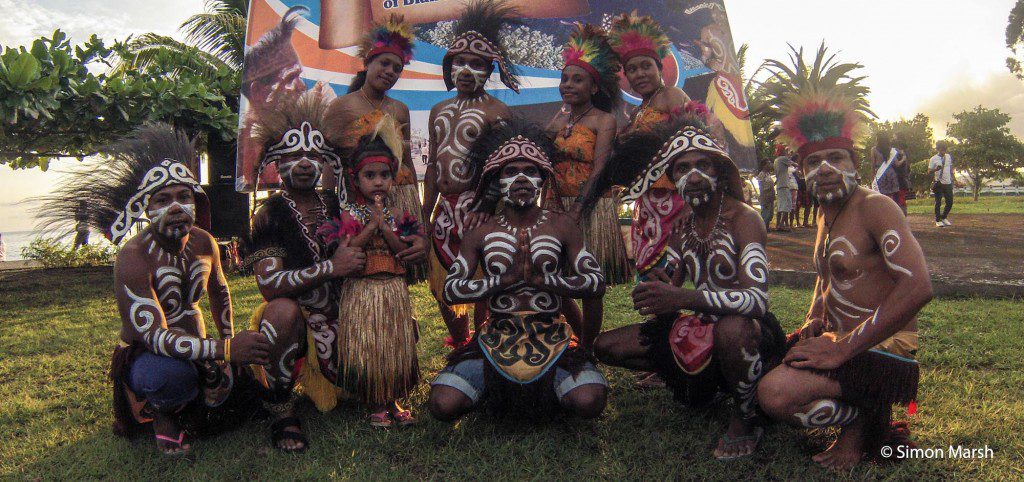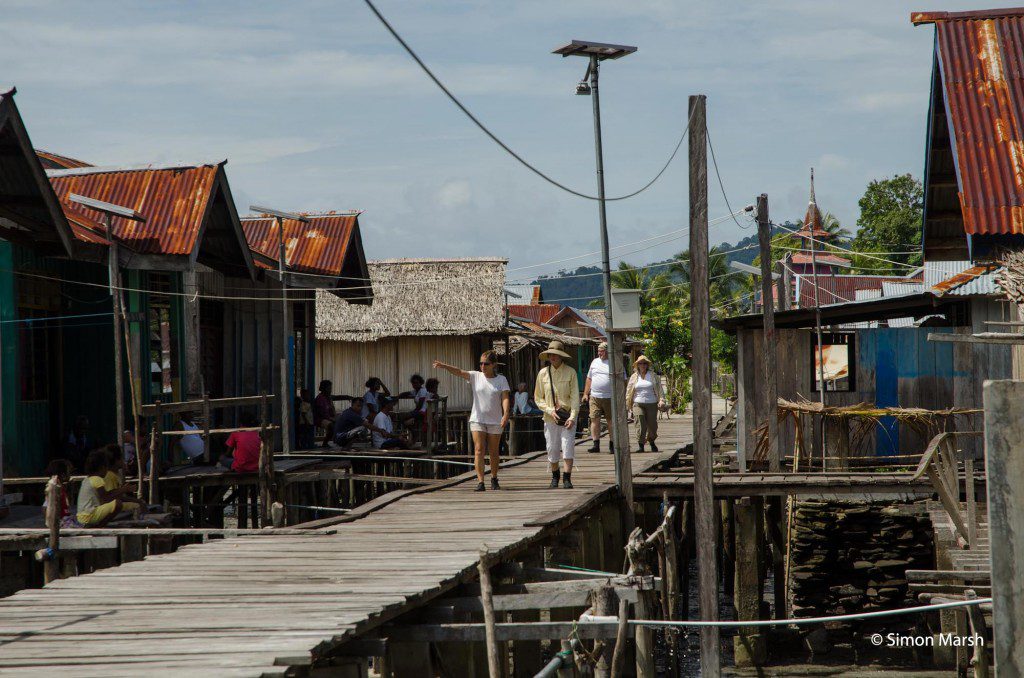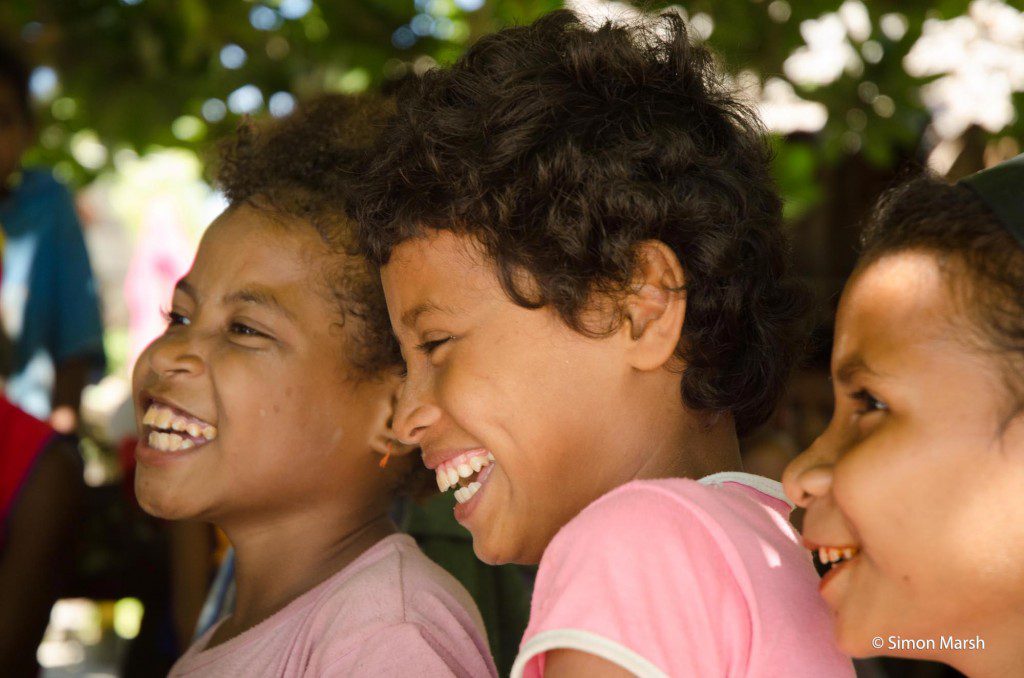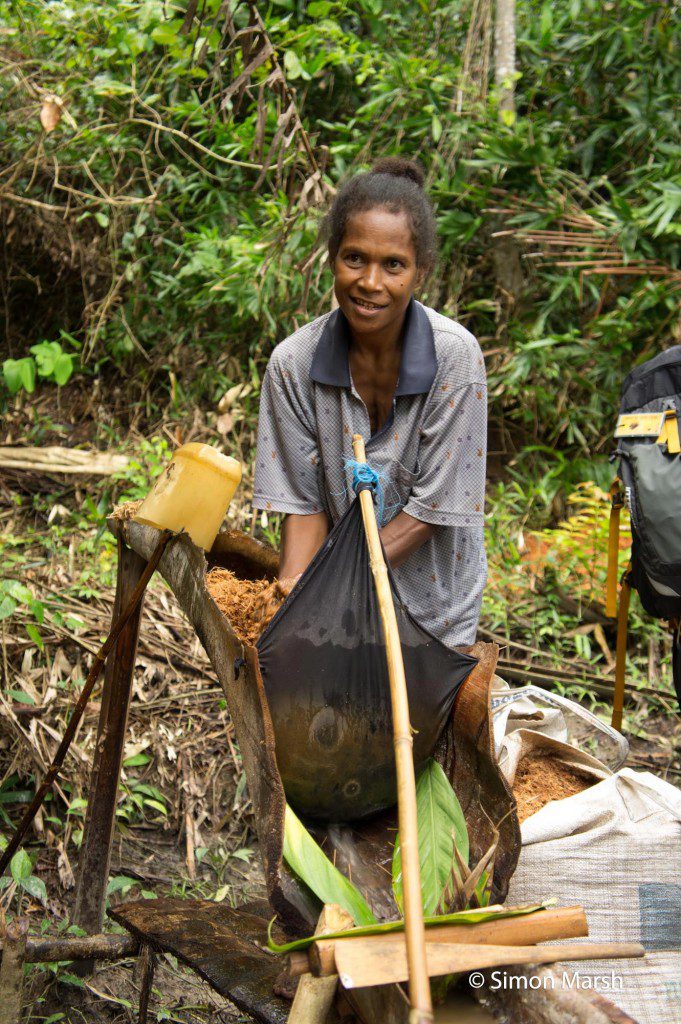Part 3 Introduction to Cenderawasih Bay: The Villages and their People by Simon Marsh, photography by Simon Marsh and Andrina Bindon
Part 3 Introduction to Cenderawasih Bay: The Villages and their People
Papuan life is difficult to understand from the outside. It is imperative to go ashore, visit a village, observe daily rituals and speak with the locals if you want to discover Papuan traditions. In Cenderawasih, there are several opportunities for village visits. Your liveaboard should first send a representative into the village to arrange the visit with the chief or headman. Once the formalities have been completed you will be welcomed into another world and another time. Visiting the village of Yende, a village largely built on stilts in the southern bay, or Amberperam on the east coast of Numfoor gives you a real sense of what life is like for the local people. Yes, mud huts have mostly been replaced by cement buildings and Dutch churches, but seeing firsthand how the locals survive, even thrive, in these remote places makes western visitors appreciate comforts we often take for granted.
These villages have a frank interest in visitors and the outside world, and receive little news except what they glean from occasional radio reports or months-old newspapers. Yet, the smiles of the children as they trail the western faces around their village, the warm welcome from the head of the village and myriad invitations to view homes are truly an experience that should not be missed. Inexpensive to us but valued gifts to them, such as soccer balls, pretty hair ties for the girls and books and pens for the schools are very much appreciated in every village. But visitors can also leave gifts that can change lives. For example, on Damai our guests often donated unwanted glasses, helping many elderly people see properly for the first time in many years. Basic medical supplies such as bandages and antibiotic creams are also appreciated. On our walks through various Cenderawasih villages, we stopped to play soccer with twenty or thirty of the village boys, sat and talked with the village elders, and were even treated to impromptu children’s concerts. Experiences certainly worth taking a few hours from the diving day.
To the south of Yende a small community of two families will shyly welcome visitors to Rippon Island. Here, the families live on their gathered fruits and vegetables and the fish they catch by hand, all to supplement their staple diet of sago, a starchy substance harvested from sago palms. Sago is so crucial to the Papuan diet that the palm is known as the food of Papua. At Rippon, tourists are permitted to accompany the families and see how sago is chopped and washed to produce a raw paste, which is cooked in hot stones daily. Our varied western meals easily become an embarrassment of dietary riches.
So please come to Cenderawasih Bay for the excellent diving, the high level of endemic species, the whale shark experience and the uncrowded dive sites, but a human experience, unavailable elsewhere in the archipelago, is right there to be had, if you look for it.
Simon Marsh and Andrina Bindon, longtime cruise directors at Dive Damai (www.dive-damai.com) are now Damai’s Bali-based operation managers.





































